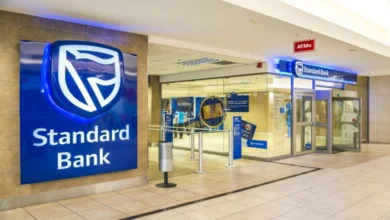
During the month of July, T-bill auctions remained oversubscribed, with the overall subscription rate coming in at 106.6 percent, down from 120.5 percent recorded in June.
Investor demand shifted to the 91-day paper which had the highest subscription rate of 213.4 percent, up from 143.4 percent recorded the previous month.
According to Cytonn report, investors’ continued interest in the 91-day paper during the month is mainly attributable to the paper’s higher return on a risk-adjusted basis.
The subscription rate for the 182-day papers also increased to 119.7 percent, up from 75.6 percent, while the subscription rate for the 364-day declined to 50.8 percent, from 156.4 percent recorded in June.
The yields on the 364-day, 182-day, and 91-day papers declined by 29.7 bps, 36.2 bps, and 38.3 bps to 7.4, 7.0, and 6.5 percent, respectively.
For the month of July, the government accepted a total of Ksh.88.6 billion, out of the Ksh.102.3 billion worth of bids received as they sought to contain the rates.
Also Read:
- T-Bills remained oversubscribed in the past week
- T-Bills remained undersubscribed in Q1 of 2021
- Investors sold off Ksh.1.9 billion NSE stocks in 5 months
In the past week, T-bills remained undersubscribed, with the overall subscription rate coming in at 74.2 percent, an increase from the 69.6 percent recorded the previous week.
The 91-day paper recorded the highest subscription rate, receiving bids worth Ksh.8.5 billion against the offered amount of Ksh.4.0 billion, translating to a subscription rate of 212.4 percent, a decline from the 252.1 percent recorded the previous week.
The subscription rate for the 182-day paper increased to 65.0 percent, from 32.1 percent recorded the previous week, while the subscription rate for the 364-day paper declined to 28.1 percent, from 34.0 percent recorded the previous week.
The yields on the 91-day and 182-day papers increased by 0.9 bps and 1.1 bps to 6.5 and 7.0 percent, respectively, while the yields on the 364-day paper declined by 0.6 bps to 7.4 percent.
The government continued to take advantage of the low yields and the high liquidity in the market by accepting Ksh.17.7 billion out of the Ksh.17.8 billion worth of bids received, translating to an acceptance rate of 99.7 percent.
Bond Market
In the Primary Bond Market, the three bonds reopened by the government for the month of July recorded a subscription of 194.9 percent, attributable to the high liquidity in the market.
The government sought to raise Ksh.60.0 billion in the three bonds and accepted Ksh.79.9 billion out of the Ksh.116.9 billion worth of bids received, translating to an acceptance rate of 68.4 percent.
Investors preferred the shorter-dated paper, FXD1/2012/15, with an effective tenor of 6.2 years, which received bids worth Ksh.48.8 billion, FXD1/2021/25 received bids worth Ksh.39.9 billion while FXD1/2018/15 received bids worth Ksh.28.2 billion.
The three bonds had coupon rates of 11.0, 12.7, and 13.9 percent, and the weighted average yields were 11.6, 12.6, and 13.9 percent for FXD1/2012/15, FXD1/2018/15, and FXD1/2021/25, respectively.
Bonds Opened By GoK
During the week, the government reopened two bonds, FXD3/2019/10 and FXD1/2018/20, and a primary issue on FXD1/2021/20, with effective tenors of 7.5 years, 14.6 years, and 20.0 years, respectively, whose offer period ends on August 10, 2021.
The coupon rates are 11.5 percent for FXD3/2019/10 and 13.2 percent for FXD1/2018/20, while the coupon on FXD1/2021/20 will be market-determined.
“We expect investors to prefer the longer-dated papers, FXD1/2018/20 and FXD1/2021/20, as they search for higher yields given the low yields in the currently in the market.”
“Our recommended bidding range for the three bonds are 11.9-12.2 percent for FXD3/2019/10, 12.8%-13.2% for FXD1/2018/20, and 13.1%-13.4% for FXD1/2021/20,” said Cytonn Investments.





